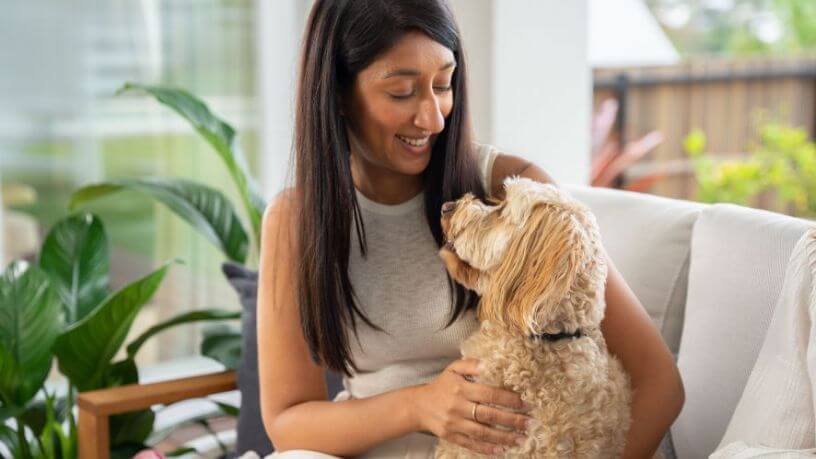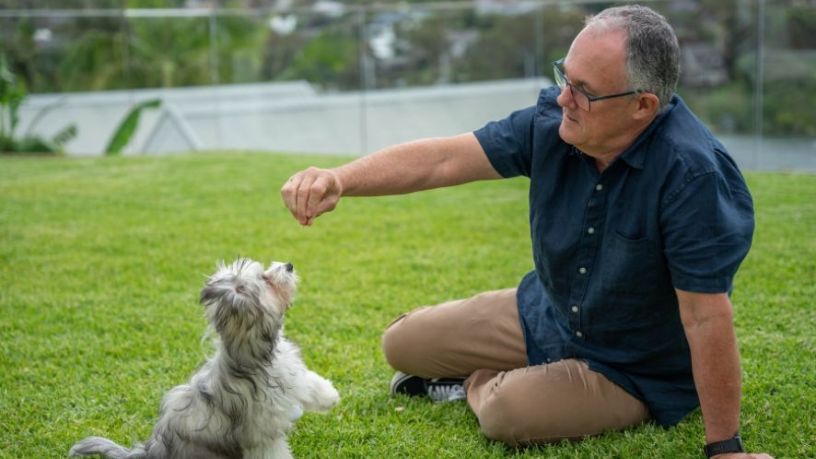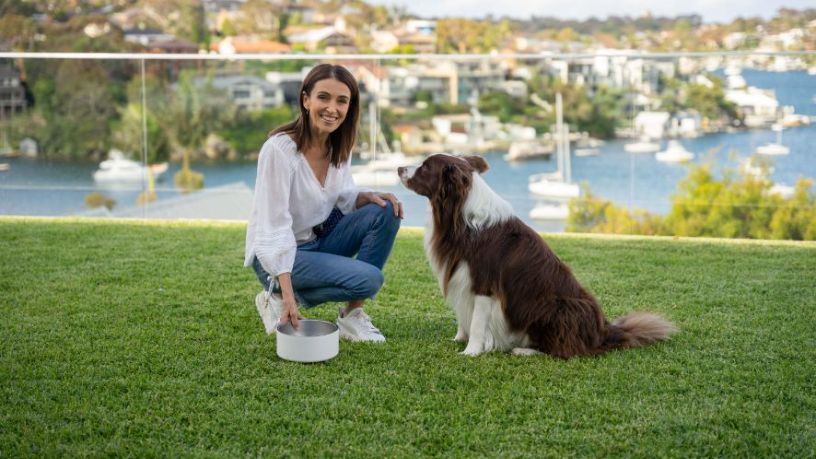Spending just a few minutes a day training your puppy will help them learn good behaviours and give you some quality time to bond.
Key takeaways
Teaching a young puppy how to sit can help keep them safe around other dogs and roads.
Don’t ever force your puppy into a seated position.
Teaching your pup basic commands is a lot of fun, and learning to sit on command is one of the first puppy training tricks many dogs and their owners work on together.
“Teaching your dog to sit is a fun and relatively easy training technique that you can practise from [an early age],” says Australian veterinarian and TV personality Dr Katrina Warren. “In fact, teaching them commands like 'sit' can be a great way to build a strong relationship from the start.”
Why should you teach a dog to sit?
As well as creating and strengthening your bond with a new puppy, there are lots of great reasons to teach a dog to sit.
It’s important for dogs to have good manners around people and other animals, and this often starts with the sit command. Teaching your dog to sit when it meets and greets people can help stop them jumping and act as a circuit breaker when they’re hyperactive or unfocussed and you need them to calm down or pay attention.
Have you ever noticed the way many dogs will often automatically sit when you’re holding food or treats? That’s because when you teach ‘sit’ during puppy training, it can become a way for your dog to say ‘please’ or show you that they want something from you.
“‘Sit’ can also be a very useful command to keep your dog safe when you're out and about,” adds Dr Warren. “For example, training them to sit at curbs can make crossing roads safer and having them sit can take their mind off a distraction like another dog.”
With all of that in mind, let’s take a look at Dr Warren’s step-by-step expert guide on how to teach a dog to sit.
Teaching a puppy to sit
Before you start, make sure you have some delicious puppy training treats on hand.
Rewarding the behaviour you want from your puppy is the key to positive reinforcement-based training, the best way to train a dog.
“With your dog in the standing position, hold one of your training treats near their nose,” says Dr Warren. “Keeping the treat near your dog's nose, move your hand in an arc over their head. As your pup raises their head to follow the treat, their bottom will naturally fall to the floor.”
As soon as your pup moves into the sit position, praise them and give them the treat. Once you and your pup have got the hang of it, practise a number of times in short but regular sessions (at this stage, you don’t need to pair a verbal cue. Just get your pup used to the sitting action and associating it with getting a treat).
As your dog learns that they will get a treat for sitting, they will probably start to sit for longer. This is when you can add a cue into your puppy training. Say ‘sit’ as your dog starts to move into the right position, but be careful not to say it before they start to sit, or they may associate the word with the wrong movement.
Puppy training tricks and tips
We’ve put together a few helpful hacks to make teaching your dog to sit even more successful.
- When you teach a dog to sit (or teach them any new behaviours) it’s essential to use high value dog and puppy training treats.
- Only train young puppies for 3 to 5 minutes at a time for a total of 15 minutes each day as they have short attention spans.1
- When training a puppy to sit, don’t hold your lessons just after mealtimes. A dog with a full belly won’t be as motivated by those delicious puppy training treats!
- Don’t have a food motivated pup? Instead of training treats, you can use their favourite toy. This is also a good way to keep training up without overfeeding.
- When you teach a dog to sit, never push your pup’s rear end down, as this can be confusing and even intimidating for them.

At Bupa, trust is everything
Our health and wellbeing information is regularly reviewed and maintained by a team of healthcare experts, to ensure its relevancy and accuracy. Everyone's health journey is unique and health outcomes vary from person to person.
This content is not a replacement for personalised and specific medical, healthcare, or other professional advice. If you have concerns about your health, see your doctor or other health professional.
1RSPCA UK. (2024). Dog Training. RSPCA UK.
You might also like...
Common puppy emergencies and what to do when they happen
Puppies are plenty of fun, but sometimes they get into trouble and may need a to visit a vet. Get familiar with some common puppy emergencies here.
5 golden rules for dog training
Time to teach your dog the house rules? We’ve put together 5 tips to help make obedience training easy, stimulating, and a lot of fun for your fur-baby!
How to train your dog the right way
Done right, training can improve your pup’s confidence, help you create a loving and healthy bond, and be a lot of fun! But which training style is best?
How to teach a dog to come when called
Teaching your dog to come when you call is one of the most important things you can do to keep them safe when you’re out and about. So, how does recall training work?





